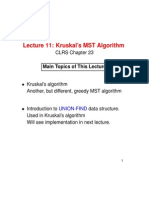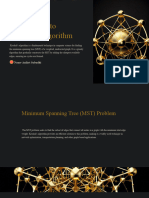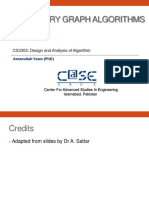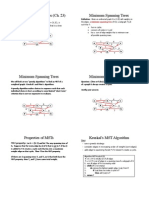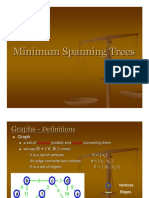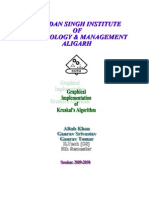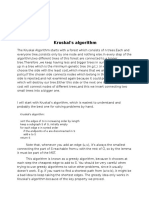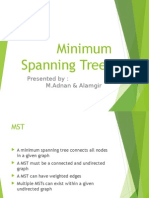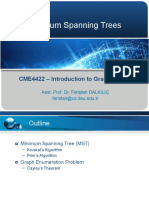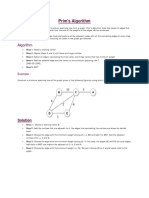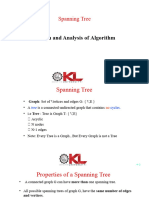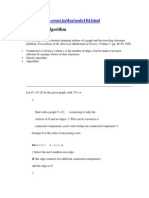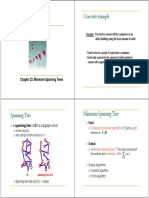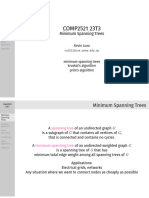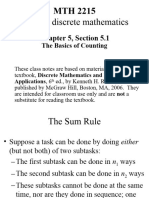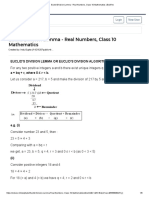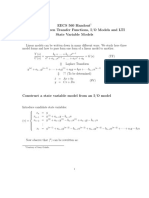0% found this document useful (0 votes)
115 views21 pagesKruskal's Algorithm: Melanie Ferreri
The document defines key terms related to graphs and spanning trees. It provides motivation for finding minimum spanning trees by describing an application to connecting villages with roads at minimum cost. It then presents Kruskal's algorithm for finding a minimum spanning tree in a weighted graph by sequentially adding edges in order of non-decreasing weight that do not form cycles. The algorithm is proved to always produce a minimum spanning tree. An example applies the algorithm to find the minimum spanning tree of a sample graph.
Uploaded by
Work 133Copyright
© © All Rights Reserved
We take content rights seriously. If you suspect this is your content, claim it here.
Available Formats
Download as PDF, TXT or read online on Scribd
0% found this document useful (0 votes)
115 views21 pagesKruskal's Algorithm: Melanie Ferreri
The document defines key terms related to graphs and spanning trees. It provides motivation for finding minimum spanning trees by describing an application to connecting villages with roads at minimum cost. It then presents Kruskal's algorithm for finding a minimum spanning tree in a weighted graph by sequentially adding edges in order of non-decreasing weight that do not form cycles. The algorithm is proved to always produce a minimum spanning tree. An example applies the algorithm to find the minimum spanning tree of a sample graph.
Uploaded by
Work 133Copyright
© © All Rights Reserved
We take content rights seriously. If you suspect this is your content, claim it here.
Available Formats
Download as PDF, TXT or read online on Scribd
/ 21




